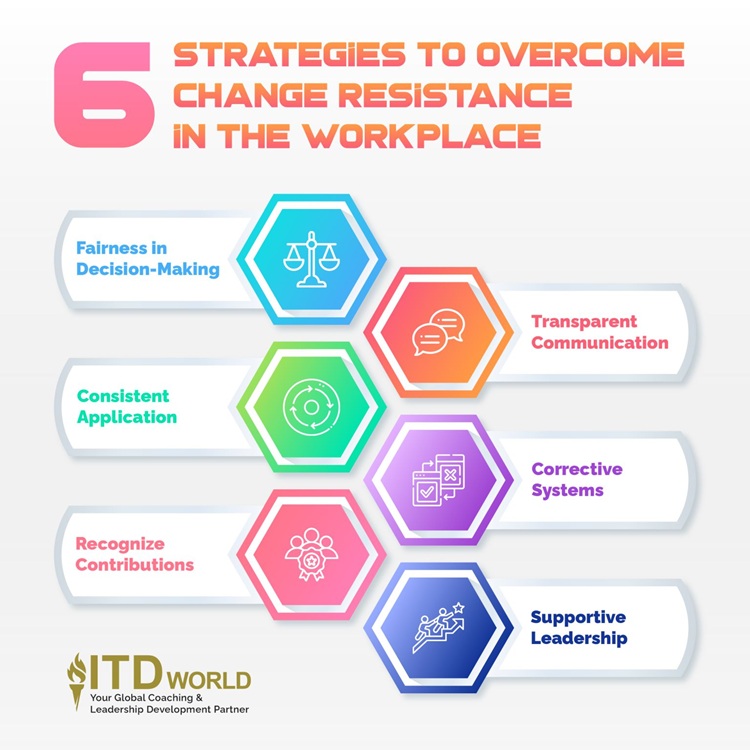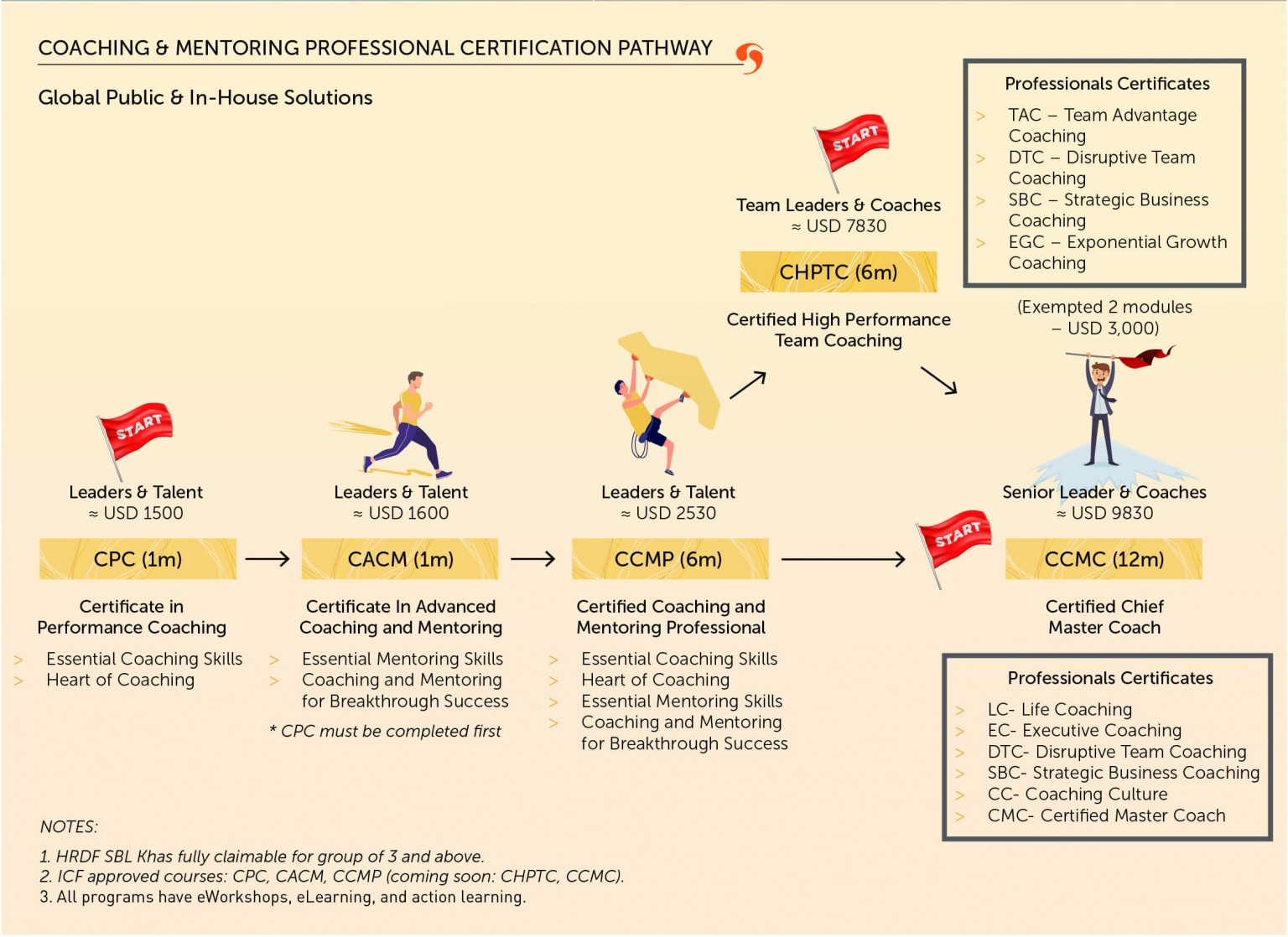Learn about resistance to change in the workplace, plus how leaders may manage & turn it into readiness in today’s ever-changing world.
Change is an inevitable part of the modern business landscape. Even so, it is often met with recalcitrant acts, which surface in a variety of ways. Episodes can be as mild as hesitancy in implementing new policies to as grave as sabotaging the whole process. Being able to manage resistance to change in the workplace has become a vital capability for organizational leaders in today’s ever-changing world.
|
Author: Aaron Ngui |
Highlights
- Change resistance stems from people’s natural dislike of new things, causing them to push back against new policies and processes. Within a workplace context, this problem is caused by a variety of factors – including fear, job security concerns, rigid cultures, and lack of trust in leadership. If left unresolved, it can seriously cripple a company’s efficiency, morale, and ability to innovate.
- A drop in productivity, increased absences, and negative attitudes are common signals of employees’ resistance to change.
- While addressing the issue is challenging, ignoring it will only lead to bigger problems. Therefore, leaders should demonstrate fairness, pay attention to communication, ensure consistency in delivery, establish feedback channels, give recognition, and practice supportive leadership to make team members more likely to embrace change and contribute to collective success.
What is Change Resistance?
Change resistance is the pushback or reluctance people experience when faced with new ways of doing things. It’s a natural human tendency to prefer the familiar and dislike change, as the latter disrupts routines, requires the cultivation of new skills, and creates a sense of uncertainty about the future.
In the workplace, such resistance often shows up in many ways, both overt and subtle:
- Openly objecting to new policies or procedures.
- Publicly criticizing a new initiative or those who propose it.
- Dragging their feet on implementing the change.
- Passively/ aggressively resisting by finding loopholes or workarounds.
- Demonstrating a generally negative attitude.
- etc.
Examples:
- A team of accountants is resistant to switching from a paper-based filing system to a new digital accounting software. They may voice concerns about the complexity of learning the software or worry that it could lead to job losses.
- A factory worker is hesitant to adopt a new assembly method that requires additional training. They may be comfortable with the current method and fear that the new way will be slower or more difficult.
- A group of managers is reluctant to embrace a new company-wide communication platform. For years, they have been able to utilize the existing communication channels to great success; hence, the new platform is deemed by them as unnecessary or disruptive.

Define resistance to change
What Causes Change Resistance in the Workplace?
Resistance to change happens when team members hesitate or refuse to accept changes introduced. It can be attributed to a variety of reasons, including:
- Fear
Most of the time, the phenomenon is driven by fear – namely, fear of the unknown, failure, losing control, or not having the capabilities to meet new challenges. This is especially true in companies where employees feel they lack the necessary training or support to adapt/ develop the necessary skills. Nonetheless, leaders and organizations may overcome it by understanding the root causes and addressing people’s concerns using effective change management strategies.
- Job security concerns
Sometimes, people might worry that changes will lead to job losses or require them to take on additional responsibilities without a raise.
- Rigid structures
Organizations with a more conservative culture and a fixed way of doing things are more likely to suffer from this problem. Strict rule enforcement and little tolerance for mistakes/ deviation from the norm mean that most team members will prefer sticking with the way things have always been done (i.e. they choose inertia over innovation) – instead of taking on “extra work” by adopting new processes or systems.
Conversely, those more open to experimenting with new processes may find that the barriers to transformation are lower.
- Lack of trust in leadership
Trust is the foundation of long-term organizational success. If employees don’t believe that management has their best interests at heart, they’re more likely to resist change. Without clear communication about how an initiative will impact them, a company will have a hard time securing its people’s buy-ins.
The psychology behind resisting change
The Impact of Change Resistance on Organizations
Change is never painful, only the resistance to change is painful.
Resistance to change may negatively impact organizations in several ways. If leaders do not manage this phenomenon effectively, it can severely upset the sustainability and continuity of the whole business moving forward:
- Efficiency
Team members who resist new systems or processes are likely to see their productivity negatively impacted. This is because they are spending their time and energy on opposing the changes, instead of embracing it. If that happens, organizations may find projects slowing down, causing delays in outputs and results.
- Morale
Morale often degrades when opposition is high. With low morale, talent management (including development & retention) becomes much harder – as people lose faith in the organizational vision and mission. Long-lasting opposition creates conditions that increase employee turnover, which leads to the organization losing capability and institutional knowledge.
- Stagnation
In the long run, resistance to change inhibits creativity and innovation, which may impede the organization from taking advantage of the market and technological advancements. As a result, the company will soon lose its competitive advantage and become less capable of sustaining business results. In fact, according to a study by McKinsey, a reluctance to embrace change is said to account for 70% of failures in business renovation efforts.
Read more: Organizational Transformation – An Essential Guide
Can Leaders Detect Change Resistance? Signs to Look Out for
People who resist change do not operate in the dark. To address the problem, leaders should do their best to look out for the following signs:
- Decreased productivity
A drop in overall performance is usually among the first indicators of resistance. When people spend more time and energy worrying about what is going to happen – or are more engaged in conversations surrounding their concerns instead of getting things done, work is likely to suffer.
- Increased absenteeism or turnover
Another signal for leaders to be attuned to is an uptick in absenteeism – which may signal either dissatisfaction with the introduced changes or stress caused by them. If high performers are leaving, that could be a strong hint that they are uncomfortable with what is being done – or feeling uncertain about the future.
- Negative attitudes
Changes in the overall mood of the workplace may also indicate resistance. Those may manifest as increased complaints, a pessimistic outlook, or a general decline in workplace morale.

Types of Resistance to Change
By level:
- Individual resistance: This occurs when specific employees oppose the change due to personal reasons like fear of the unknown, lack of skills, or disagreement with the perceived benefits.
- Group resistance: A team or department may collectively denounce a new initiative, often due to established norms, groupthink, or a desire to protect their territory.
- Organizational resistance: This is resistance embedded within the organization’s structure, culture, or policies. It could be due to inflexible processes, bureaucratic hurdles, or a lack of supportive resources.
By behavior:
- Active resistance: Openly voicing opposition through protests, arguments, or refusal to cooperate.
- Passive resistance: A more subtle type, characterized by employees exhibiting decreased motivation, procrastination, or negativity toward the change.
- Covert resistance: This involves hidden forms of resistance, such as spreading rumors, sabotaging the change efforts, or building a culture of negativity.
By cause:
- Logical/rational resistance: Employees might resist due to a lack of clear rationale for the change, concerns about its feasibility, or potential negative consequences.
- Psychological/emotional resistance: Fear, uncertainty, and a sense of loss associated with the change often cause people to become resistant to stepping outside their comfort zone or letting go of familiar routines.
- Sociological resistance: A result of group norms, social pressure, or a clash of values within the team or organization.
Change Resistance Models
Over the years, researchers have proposed several frameworks to address the hurdles of implementing change. Here, let us take a closer look at 6 prominent ones:
-
Lewin’s Change Management Model
This classic model by Kurt Lewin presents a three-stage process:
- Unfreeze: Prepare the organization for change by highlighting the need for it and addressing any current inefficiencies.
- Change: Implement the planned changes. Clear communication and training are crucial during this phase.
- Refreeze: Solidify the changes in the organization’s culture – by monitoring progress, celebrating successes, and ensuring the new practices become the norm.

(Source: ResearchGate)
-
ADKAR Model
Developed by Jeff Hiatt, the ADKAR model focuses on individual mindsets and their readiness for change. It outlines five key outcomes for successful transformation:
- Awareness: Employees need to understand the reasons behind the change.
- Desire: They must see the benefits and be motivated to participate.
- Knowledge: Proper training is required for people to understand how to implement the initiative.
- Ability: They must be equipped with the skills and resources to effectively make it happen.
- Reinforcement: Positive reinforcement and ongoing support are essential to sustain the change.
-
Kotter’s 8-Step Change Model
John Kotter’s theory emphasizes a more comprehensive approach with eight steps:
- Create a sense of urgency: Convince stakeholders of the need for change by highlighting potential problems or missed opportunities.
- Build a guiding coalition: Assemble a team of influential individuals to champion the change.
- Form a strategic vision: Develop a clear and compelling vision for the future state of the organization.
- Communicate the vision: Effectively communicate the vision to all levels of the organization.
- Empower broad-based action: Remove barriers and empower team members to take ownership of the initiative.
- Generate short-term wins: Celebrate early successes to maintain momentum and build confidence.
- Consolidate gains and produce more change: Leverage the initial wins to drive further transformation.
- Anchor new approaches in the culture: Integrate the changes into everyday practices and company culture.
-
Maurer’s 3 Levels of Resistance
- Lack of information: Employees may simply need more clarity on the change and its purpose.
- Emotional reaction: Change can be unsettling; hence, addressing people’s fears and concerns is important.
- Deep-seated resistance: This could be due to a clash of values or a fundamental disagreement with the change.
-
Change Resistance Curve
Also known as the Kübler-Ross Change Curve, the framework provides valuable insight into the emotional journey people take when faced with significant change. Originally developed by Elisabeth Kübler-Ross to depict the stages of grief, it has been adapted for various situations, including change management within organizations.
This model outlines five distinct stages individuals experience as they grapple with change:
- Denial: The initial reaction is often disbelief and a refusal to accept the change. People may cling to the old ways, leading to a potential drop in productivity.
- Anger: As reality sets in, frustration and anger emerge. This stage is often disruptive if not addressed effectively. Open communication and clear explanations may aid in mitigating negative emotions.
- Bargaining: People may attempt to negotiate or find compromises to lessen the impact of the change. Leaders may leverage this stage by creating opportunities for open discussion and exploring potential adaptations.
- Depression: As the change becomes inevitable, a period of low morale and demotivation sets in. Providing support and highlighting the benefits of the change is crucial for individuals to navigate this challenging phase.
- Acceptance: Finally, people reach a point of acceptance. They begin to integrate the new reality into their routines and move forward. Celebrating successes and emphasizing the positive aspects of the change should accelerate the process.

Change resistance curve
(Source: ResearchGate)
-
Dannemiller’s Formula for Overcoming Change Resistance
- D (Dissatisfaction): This represents the level of unhappiness with the current situation. People need to feel the current way of doing things isn’t working well to be motivated to change.
- V (Vision): This refers to a clear and inspiring picture of the desired future state. Individuals need to understand the benefits and positive outcomes of the change.
- F (First Steps): These are the initial concrete actions that can be taken towards the vision. Having a clear path to get started is crucial for success at this stage.
- R (Resistance): This represents the natural tendency to oppose change.
The formula states that for successful change (represented by “C” in some variations), the product of Dissatisfaction, Vision, and First Steps needs to be greater than Resistance.
In simpler terms, even if people are dissatisfied (D) and there’s a compelling vision (V), if there’s no clear path to get started (F), the change effort might falter. Similarly, if the first steps are confusing (low F) or the vision isn’t well-communicated (low V), resistance (R) might win out.
6 Strategies to Overcome Change Resistance in the Workplace
Addressing the resistance to change in the office is often a daunting task. However, the consequences of shying away from the issue are generally even worse. Research suggests that organizations and leaders may adopt the following six strategies in approaching the challenge.
-
Fairness in decision-making
It is crucial for organizations to ensure the processes leading to changes are perceived to be fair by those impacted by the transition. People are more likely to accept and give their support when they believe that decisions are made without prejudice. In other words, leaders who practice transparency in making decisions contribute to fostering team members’ acceptance. Being open about why changes are made helps others feel respected and valued, instead of feeling like passive recipients of such directives.
An approach to consider is to leverage the spirit of curiosity. Making people curious about the benefits of transformation may better soothe doubts over the results of proposed changes.
Read more: Inclusive Leadership – Moving From Buzzword to Bottom Line
-
Transparent communication
Another strategy to reduce resistance is to practice clear and honest communication – so as to build trust. Organizations and leaders who openly share the reasons for the transition, and provide regular updates on the progress and impacts give others a reason to believe in them. People are less likely to be on the defensive side when they know the rationale behind the decisions and what is going on.
Communication can involve detailed explanations and updates – as well as open lines for people to express concerns, get clarification, and give feedback.
Read more: The Power of Cross-Cultural Communication
-
Consistent application
One of the reasons people are against change is when they feel that implementation is applied inconsistently. This leads to skepticism that feeds resistance. Therefore, it is crucial for organizations and leaders to nip the perception of bias and favoritism in the bid. They can demonstrate their commitment by ensuring everyone, from the bottom to the top, adheres to the new policies, practices, processes, methods, or systems. Doing so reduces negative reactions and fosters stronger compliance.
-
Corrective systems
It is said that feedback is the breakfast of champions. That understanding should also apply to the organization level, and not only to individuals. Offering channels where people can make their concerns and voices heard, and acting on them makes them feel involved in what is happening. In addition, setting up a feedback loop enables leaders to finetune the transformation – as well as sends out a strong signal that the organization is committed to effectively implementing changes.
-
Recognize contributions
Recognizing and rewarding those who positively engage with the change process motivates others to follow suit. Acknowledgment can be as simple as verbal praise or as significant as promotions or financial rewards. When leaders acknowledge effort and progress, people feel appreciated and valued – which contributes greatly to breaking down the barriers to get buy-in for effective transformation.
-
Supportive leadership
Leaders play a crucial role in managing change resistance. They need to provide empathetic guidance during transitions, so as to alleviate fears and foster acceptance. As change usually involves meeting key milestones, those who support goals continuously help reduce the friction between the starting point and the end goal.
Supportive leadership is demonstrated by being accessible, responsive, and proactive in addressing concerns. In addition, leaders should serve as role models, demonstrating their commitment to the new direction and supporting their team through effective coaching and sufficient resources.
Read more: Leading Through Uncertainty – How to Navigate Turbulent Times

The rate of change is not going to slow down anytime soon. If anything, competition in most industries will probably speed up even more in the next few decades.
John P. Kotter, Harvard Business School Professor Emeritus
Change resistance management: How to handle it
Change Resistance Quotes
The most difficult thing is the decision to act; the rest is merely tenacity. The fears are paper tigers. You can do anything you decide to do.
Amelia Earhart, Aviator
The world hates change, yet it is the only thing that has brought progress.
Charles Kettering
Any change, even a change for the better, is always accompanied by drawbacks and discomforts.
Arnold Bennett
Often, the greater our ignorance about something, the greater our resistance to change.
Marc Bekoff
He who rejects change is the architect of decay.
Harold Wilson

How Does Coaching and Mentoring Help Overcome Change Resistance?
Coaching and mentoring aid leaders in executing change by facilitating a smoother transition. For one, coaches and mentors support people to pick up capabilities to make them more resilient. They can also help others adopt mental models and practices to enhance flexibility during the transitional process.
In addition, coaches and mentors may assist leaders in recrafting and refining their messages. In doing so, communication on matters relating to changes is clearer, more persuasive, and better resonates with others. When narratives are clear, people are more likely to work together among themselves and with decision-makers. Also, when information on the benefits is persuasive, they may see for themselves the incoming advantages – which should increase their commitment and motivation to embrace the change.
On the other hand, coaching and mentoring contribute to addressing people who fear they are not up to the mark. Specifically, coaches can support them in identifying their strengths and areas for improvement – so that they become better equipped to leverage their capabilities and close the gaps. By equipping people with the skills to move forward, they may face changes with more confidence.
As the fear of inadequacy is replaced by a shared commitment to growth and adaptation, this translates to a more resilient team that is well-prepared to handle future challenges.
Moving from Resistance to Readiness with ITD World’s Solutions
Change is the law of life and those who look only to the past or present are certain to miss the future.
John F. Kennedy, 35th President of the USA
Moving from resistance to readiness is about cultivating a mindset to see changes as opportunities for growth, development, and improvement. An approach that many have found helpful in change management is to tap into executive coaching services. Working with an executive coach or a team of such experts allows leaders to gain increased clarity on what to do, align their efforts, and collaborate better for results.
ITD World’s coaching programs specifically address change resistance by:
- Identifying the root causes: Our coaches will work with your company to understand the underlying reasons behind resistance. Is it fear of the unknown? Lack of trust in the change process? By uncovering the “why” behind the phenomenon, leaders may be equipped to better tailor their communication and approach.
- Building change champions: We will equip your management with the skills to identify and develop change champions within their teams. These champions become vocal advocates for the change, helping to answer questions, address concerns, and build overall buy-in.
- Developing a communication strategy: Clear and consistent communication is essential for managing change. Our coaches can help craft a communication plan that effectively conveys the vision for change, addresses potential concerns, and keeps everyone informed throughout the process.
- Fostering a culture of growth: ITD World’s coaching goes beyond simply navigating the current change. We enable leaders to develop a culture that embraces continuous learning and adaptation. This empowers employees to see change as a positive force and become more adaptable in the future.
Contact ITD World today for a FREE consultation!
Other resources you might be interested in:
- Organization Development (OD): A Closer Look
- Talent Transformation: Build a Future-ready Workforce
- Talent Development Playbook: Building Your Future Workforce
- Future Ready Organization: 11 Tips to Building One Capable of Adapting to Industry Trends
- Coaching vs Mentoring: Define the Differences


